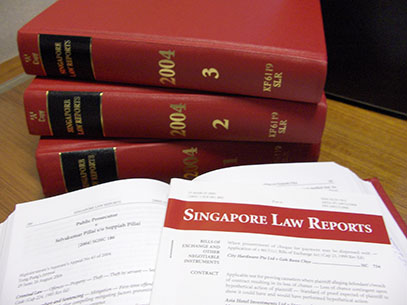
Indonesia – on the road to direct investment
by Gleb Zoubov
The transformation of Jakarta, the capital of Indonesia, from the columns of smoke and chaos that engulfed it in 1998 to the present megapolis of soaring office buildings and skyscrapers, with more than 500 malls citywide, is a mirror image of the entire country’s fast paced and dynamic development over the past decade.
The change, bolstered by surging domestic demand, increasing foreign investment and one of the biggest natural resources booms in the world has been further cemented through a rating upgrade to investment grade by Fitch and recently Moody’s rating agency.
Coupled with an impressive 6.5% growth in GDP in 2011, that Indonesia had achieved through a gradual weaning of foreign borrowing with foreign debt at currently only 10% of GDP, the Southeast Asia’s biggest nearly $1 trillion economy is enjoying a heightened interest from the global investment community. Such financial giants as Mr Donald Trump Jnr have already set their sights on investment opportunities in Indonesia, as highlighted by Goldman Sachs. Furthermore, multinationals such as the Rothschild Group, Reuben Brothers, Rio Tinto, Vale (PT Inco), Newmont and many others are already actively working and exploring the many opportunities offered by the Indonesian market. This interest is reflected in the exponentially growing foreign direct investment level in Indonesia, which has reached $19.3 billion in 2011, up a fifth from the previous year. This brought the total stock of foreign direct investment in Indonesia to $105.7 billion in 2011 (excluding investment through share purchases by foreign entities).
What makes Indonesia even more attractive to potential foreign investors is the continued improvement and simplification of the requirements necessary to open a foreign owned company in the country. Already, investors can operate 100 per cent foreign owned enterprises in most sectors and no longer need to sell down equity at a later date. Only a few sectors restrict foreign investment; in most of these joint ventures are possible. The few remaining issues that are left are being worked out by the government in a timely manner.
Looking into the foreign direct investment (FDI) inflow levels into Indonesia, the manufacturing sector remains the key driver of the economy and the most popular sector for investment. A stable political and economic environment, the latter having been largely fuelled by domestic consumption, is raising confidence in the manufacturing sector for both local and international investors. Moving up the value added chain in order to fully take advantage of the country’s wealth of natural resources will be the next step to raise Indonesia’s manufacturing competitiveness on the global stage. Within the manufacturing sector the largest industries are automotive and heavy machinery, textiles and garments, fertilizer and chemical products and food, beverage and tobacco.
Indonesia’s manufacturing sector is highly diverse and a reflection of the vast array of natural resources at the country’s disposal. This ready availability of valuable commodities has been to the detriment of the development of value added manufacturing processes and products. Rampant natural resource extraction of products such as bauxite and Crude Palm Oil (CPO) are largely destined for export to be used in value added processes in markets such as China for aluminum in automotive production and in cosmetics for both products respectively. Indonesia has been losing out by being at the bottom of the value chain only. The percentage of value added for key manufacturing industries such as food, beverage and tobacco has hovered at around 30% for the past decade. The government is actively trying to address this issue through government incentives, which are currently being prepared (as of January 2012) for foreign investors to establish manufacturing bases in Indonesia to boost exports, under the Coordinating Ministry for Economic Affairs. Such incentives will include tax holidays for investors in key sectors such as textiles and garments as well as raw material producers in areas where the country is lacking.
As an investment destination for textile producers, Indonesia holds a number of significant advantages. Low labor costs, political stability, availability of raw materials and cheap industrial land are attracting investors who are seeking cheaper alternatives to China’s rising wages: the average textile worker wage in China has risen to $247 USD a month, in comparison to $140 in Indonesia. At the beginning of 2011, the Indonesian Textile Association announced the relocation of 15 Chinese textile firms to the country with up to 100 companies expected to follow suit. Most of the foreign companies will be located in the Free Trade Zone islands of Batam and Bintan – where they can easily receive corporate tax breaks and concessions for no import or export duties amongst other government incentives.
Another fast growing potential investment area in the manufacturing sector in Indonesia is the processing of seaweed, namely the eucheuma cottonii variety. In 2010 Indonesia exported 800,000 MT of raw seaweed, coming in a close second to the market leader Malaysia – supplying about half of the world’s raw seaweed, which is used by the food industry and as an ingredient in health products and cosmetics. The government aims to accelerate the development of the domestic processing industry by 2013 by encouraging the private sector to invest in seaweed processing, as Indonesia has only enough capacity to process 120,000 MT of raw seaweed a year. This has opened the market for potential FDI, in the form of processing facilities, especially in South Sulawesi area, where our company has firsthand experience working together with the local municipal government, which provided favorable conditions and concessions for setting up the production base in their area.
The second largest sector in the Indonesian economy which attracts significant levels of FDI is the mining industry. The recent changes in the mining law – requirement of processing facilities by 2014, a possible curb of raw ore exports and the requirement of reducing the foreign ownership to 49% within 10 years , had all served to shaken up the current and potential investors. Although if we analyze the underlying laws, while putting aside the media uproar at these seemingly stringent requirements, the situation is not as bleak as it seems for the potential foreign investors in this sector. For example the recent requirement for the reduction of foreign ownership in old and new mining companies, which still has yet to receive approval from the parliament – which in Indonesia can take a few years. Even if the new law is approved, the investors have ten years in which to divest 51% of shares to an Indonesian domestic company; and of course this divestment will go through at market price, which can mean significant gains for the foreign company in terms of cash liquidity. Furthermore, existing companies like Newmont (PT Newmont Nusa Tenggara) the owners of the second largest copper and gold open pit mine in Asia, have already sold a 44% stake in the company, and are planning to divest a further 7% to the Indonesian government. Similar analysis can be applied to the other recent changes in the Indonesian mining law, with the end results being that Indonesia remains the destination in the world for potential opportunities for foreign investors in the mining sector. During our recent talks with the officials from various government departments involved in the mining industry, we have been advised that all of these new laws and regulations will be subjected to discussions and debated with the relevant representatives of the industry and as such will be carefully adjusted to reflect the interests of all sides.
With the events in Japan having cast doubt on nuclear energy as a future energy source for developed markets, coal may once again see high demand from developed markets as well as emerging ones. Japan in particular will rely on Indonesian coal for its short term energy needs as it engages in the process of recovery. Indonesia has the advantages of high quality coal that offers lower environmental impact in comparison to other export markets and thus maintains its competitive edge. Confidence in the coal sector is at an all time high with coal stocks outperforming the main index; companies outside of the industry are entering the fray on top of the high profile deal between one of Indonesia’s most high profile business tycoons and the Rothschild family.
While Indonesia enjoys the abundant natural resources, which fuel its current needs for power, it has recently started to actively push for greener solutions as well. The Energy Law of 2007 set in motion Indonesia’s plan to shift its reliance on fossil fuels, mainly coal and oil, towards more environmentally friendly and sustainable means. The reorientation of the energy mix will not be an easy process; in order to tap the abundant reserves of geothermal, hydro energy and coal bed methane wide scale investment and infrastructure will be required to meet the 9% annual growth in domestic energy demands. Energy source reliance as per 2010 was 43.9% on oil, 21.29% on gas, 26.38% on coal and the remaining on geothermal and hydro power. The aim is to reduce oil dependence to 20% by 2025 while increasing the input of renewable and alternative forms of energy to make up 15% of the total. Within non-renewable resources, the country is seeking to capitalize on its vast reserves of coal bed methane. This presents a number of opportunities for investment and technology partnerships as the government aims to incentivize investment in these areas in order to realize its goals to be a low cost, low carbon economy. Furthermore there are further incentives from organizations such as the $400 million USD subsidy which is being provided by the World Bank Group and the Asian Development Bank to potential investment projects in Indonesia. The main barrier of entry into this lucrative industry is the necessity of finding a reliable local partner as potential Private Power Producer (PPP) projects require dealing directly with regional governments and therefore demands a deep understanding of local knowledge. Furthermore, in our company’s experience when we had dealings with this industry, there is a lengthy process of tendering involved for each potential project, which means that any investor willing to enter into the market must provide a comprehensive turnkey project proposal – which not all companies can provide.
Indonesia’s advantages as a business and investment destination are defined by the current global and political environment that is highlighting several key parameters to be considered in emerging markets. The country’s natural resources, potential in renewable energy and food security offer a sustainable buffer to the climbing prices being seen in oil and foodstuffs which is fuelling social discontent in other markets. Their potential as feedstock for value added manufacturing will also be vital in steering the country through its transition to a middle income and developed economy. The vast population that is set to grow to 288 million by 2050 will serve in both a highly skilled productive capacity as well as consumer market as the country reaches its predicted position of being the world’s 6th largest economy; making it a very attractive investment destination for companies looking to diversify away from the current economic downturn in the west.
For more inside information about the many opportunities for Investment in Indonesia, you can contact the author directly at gzoubov@gmail.com .




